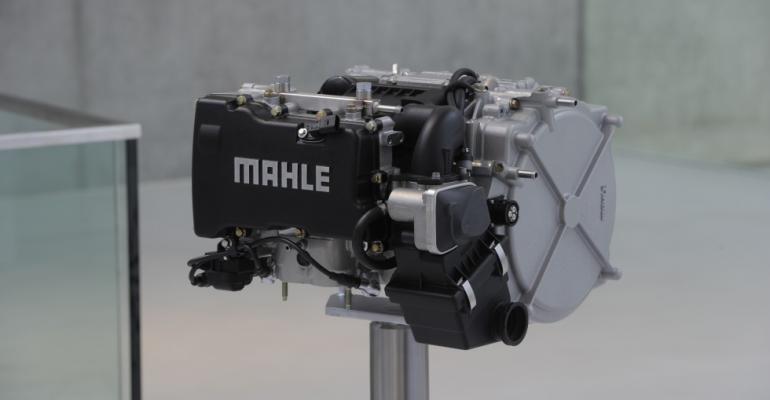BIRMINGHAM, MI – Automotive supplier Mahle harnesses Global Positioning System technology to an extended-range electric-vehicle powertrain to maximize battery efficiency, alleviate range anxiety and improve the fuel efficiency of the EREV’s internal-combustion engine.
The Energy Management Control system’s software uses GPS data to “read” a known route for the EREV and coordinate electric and ICE power so most of its battery charge has been depleted by the time it arrives at its destination.
Tests show GPS guidance also has resulted in at least a 5% improvement in the ICE’s fuel efficiency, Bernie Porter-manager and head of calibration and controls powertrain engineering and engineering services for Mahle, says at a backgrounder here.
The Mahle Range Extender Unit (REx) undergoing testing in an Audi A1 compact comprises a 0.9L inline 2-cyl., 4-stroke gasoline engine integrated into a generator powered by a 12V battery. The compact 18.9-by-16.5-by-12.9-ins. (481-by-416-by-327-mm) unit can be mounted horizontally or vertically and occupies no more space than a medium-sized suitcase, the supplier says.
Mahle’s EREV drivetrain dates back to 2012, but the GPS component is a recent addition. Real-world tests show that after the destination is entered into the vehicle’s navigation system, the GPS detects characteristics such as varying speed limits, areas where traffic density can be predicted and even road gradients.
The software calculates the charge level and determines when to apply electric or ICE power, including periods of ICE operation when the battery is being recharged.
So-called route knowledge also can anticipate when the vehicle is approaching zones where only electric power can be used; London and several other European cities have established such zones.
The objective is to use ICE power as little as possible during the trip and finish with as little battery charge as possible, as electrical power delivers greater fuel efficiency than even a small ICE, Porter says. The system also mitigates noise, vibration and harshness, he says.
In European drive cycle tests the Energy Management Control-enabled test vehicle achieved electric-only range of 42 miles (67 km) and 267 miles (430 km) on ICE power with carbon-dioxide emissions of 42 g/km, Mahle says.
The supplier is developing software with predictive-route capability that will allow a driver to communicate information such as traffic density via smartphone to the control unit, which then can allocate electrical or ICE power as needed.
“Does this mean an end to the spontaneity of driving?” Porter says. “We don’t think so.”





